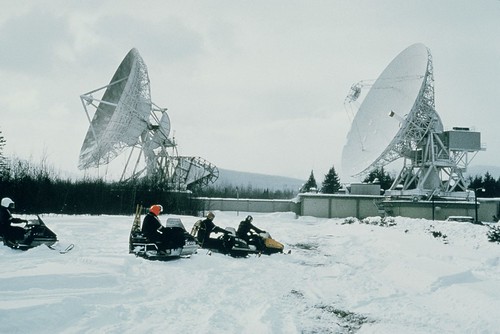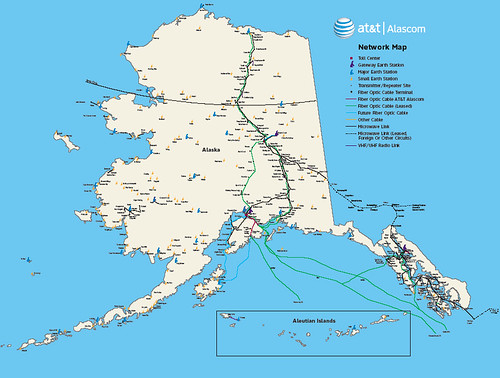Alaskan Business

Out in the bush, you need an airplane to get around effectively. You can get by with a snowmoble in the winter, but how much can you cover in a day? Alaska is a big state, spanning 663,267 square miles (that’s 367 million acres, cowboy). Since the early 1970s, Alaska’s telephone system has been using satellite, primary using AT&T Alascom’s Aurora satellites (currently Aurora III; co-named AMC-8). Pretty extensive network, highlighted by the Alyeska Pipeline:

When Galaxy 18 launched in May, we didn’t think they’d be cutting over some of the services from the Galaxy 10R spacecraft so quickly. End-of-life for G10R was originally projected to be 2015, but after a XIPS problem, it was cut short. One of the big customers on that bird, GCI, moved nine transponders of traffic yesterday:
GCI announced today that it successfully transitioned all of its rural telecommunication services last night to the Galaxy 18 satellite. This satellite will provide long-distance, Internet, distance education and telehealth services throughout rural Alaska for the next 14 years.
“The success of last night means rural Alaskans will stay connected to the most advanced network in Alaska,” said Ron Duncan, GCI president and CEO. “It also provides major businesses in Alaska and carriers in the lower 48 states the ability to directly touch customers virtually anywhere in Alaska.”
GCI owns nine transponders on Galaxy 18 and will take possession of a tenth transponder in approximately two weeks. GCI will lease the transponder capacity from Intelsat. However, GCI will be required to account for this arrangement as a capital lease. This will result in a capital lease obligation, and corresponding long-term asset, in the approximate amount of $98 million.
Hmm. At that price, it seems to work out to approximately $58,000 per month per transponder, and that ain’t a bad price. I suppose if the oil keeps pumping, there will always be money to pay for satcom services. Keep us rocket scientists busy for years.
Here’s where the oil ends up, in Valdez:
Is the teleport pictured the Verizon facility in Andvoer ME? It looks a lot like it from the picture!
No, that’s the Americom Fairbanks Earth Station. 21-meter antennas! The photo is from 1970s.